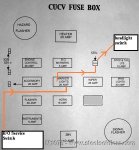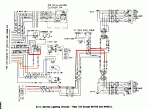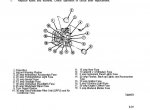One more thing on the meter - they can sometimes mislead you.
???
Yeah, I know I said you need one, and you DO. But you also need a test light. If there is corrosion somewhere along a circuit, you can still read the correct voltage, but once you put a load on it, the voltage drops. Sometimes to close to zero.
A test light will put a load on it. If there's corrosion in the circuit, you'll get a dim bulb instead of a bright one, and if it's really bad, might not even light, even though a meter will tell you there's 12 volts there.
I had this lesson hammered home to me back when I worked in a two-way radio shop. A customer complained that one radio wasn't working. It was a towing company, and they had our radios in all their trucks. I went out to their shop and tested the radio in the truck. Sure enough, it would not turn on. A quick check with my multimeter confirmed there was 12 jolts at the power plug, so obviously the radio was bad, right?
Right.
Took it back to the shop where it proved to be working perfectly.
Back out to the customer's place, and try again. Yep, multimeter says we gots 12 jolts.
Hmmm.
Try the test light. Nothing.
Plug in the radio, connect the multimeter. Got 12 volts. Turn on radio. Got zero volts.
Hmmm.
Check the wiring (like I should have done in the first place!) visually.
Oh, great. Massive corrosion at the connection to the battery.
Cleaned it up, and all was well.
Use your eyes, yes, but also use a meter, and also use a test light.







